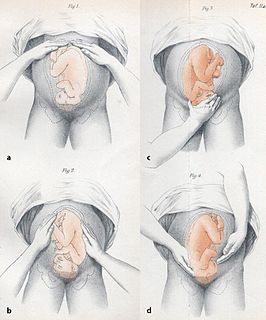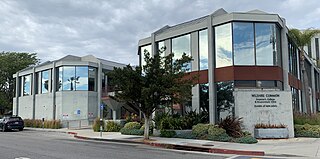Related Research Articles

Acupuncture is a form of alternative medicine and a component of traditional Chinese medicine (TCM) in which thin needles are inserted into the body. Acupuncture is a pseudoscience; the theories and practices of TCM are not based on scientific knowledge, and it has been characterized as quackery. There is a range of acupuncture variants which originated in different philosophies, and techniques vary depending on the country in which it is performed, but can be divided into two main foundational philosophical applications and approaches, the first being the modern standardized form called eight principles TCM and the second an older system that is based on the ancient Daoist wuxing, better known as the five elements or phases in the West. Acupuncture is most often used to attempt pain relief, though acupuncturists say that it can also be used for a wide range of other conditions. Acupuncture is generally used only in combination with other forms of treatment.

Obstetrics and Gynaecology is the medical specialty that encompasses the two subspecialties of obstetrics and gynecology.

An emergency medical technician (EMT), also known as an ambulance technician, is a health professional that provides emergency medical services. EMTs are most commonly found working in ambulances. In English-speaking countries, paramedics are a separate profession that has additional educational requirements, qualifications, and scope of practice.
In a blind or blinded experiment, information which may influence the participants of the experiment is withheld until after the experiment is complete. Good blinding can reduce or eliminate experimental biases that arise from a participants' expectations, observer's effect on the participants, observer bias, confirmation bias, and other sources. A blind can be imposed on any participant of an experiment, including subjects, researchers, technicians, data analysts, and evaluators. In some cases, while blinding would be useful, it is impossible or unethical. For example, it is not possible to blind a patient to their treatment in a physical therapy intervention. A good clinical protocol ensures that blinding is as effective as possible within ethical and practical constraints.

Auriculotherapy is a form of alternative medicine based on the idea that the ear is a micro system, which reflects the entire body, represented on the auricle, the outer portion of the ear. Conditions affecting the physical, mental or emotional health of the patient are assumed to be treatable by stimulation of the surface of the ear exclusively. Similar mappings are used by several modalities, including the practices of reflexology and iridology. These mappings are not based on or supported by any medical or scientific evidence, and are therefore considered to be pseudoscience.

A diener is a morgue worker responsible for handling, moving, and cleaning the corpse. In the UK, the equivalent job title is 'Mortuary Assistant', whilst the preparation, evisceration and reconstruction of the deceased is performed by an Anatomical Pathology Technician. In the US, Dieners are also referred to as "mortuary assistants" or "autopsy technicians". The word is derived from the German word Leichendiener, which literally means corpse servant.

A cardiovascular perfusionist, clinical perfusionist or perfusiologist, and occasionally a cardiopulmonary bypass doctor or clinical perfusion scientist, is a healthcare professional who operates the cardiopulmonary bypass machine during cardiac surgery and other surgeries that require cardiopulmonary bypass to manage the patient's physiological status. As a member of the cardiovascular surgical team, the perfusionist also known as the clinical perfusionist helps maintain blood flow to the body's tissues as well as regulate levels of oxygen and carbon dioxide in the blood, using a heart–lung machine.
Jin Shin Do is a therapeutic acupressure technique developed by psychotherapist Iona Marsaa Teeguarden, beginning in the 1970s.

The National Board of Chiropractic Examiners (NBCE) is a non-profit national and international testing organization for the chiropractic profession that develops, administers, analyzes, scores, and reports results from various examinations. Examinations are offered to students at chiropractic colleges accredited by the Council on Chiropractic Education (CCE). The NBCE maintains its headquarters in Greeley, Colorado. The organization was established in 1963 to standardize chiropractic testing requirements as opposed to each state having its own board exam. Since 1963, all but one of states have adopted the passage of Parts I-IV; however, each state has its own licensing requirements in addition to the NBCE exams.
Dry needling, also known as trigger point dry needling and intramuscular stimulation, is a treatment technique used by various healthcare practitioners, including physical therapists, physicians, and chiropractors, among others. Acupuncturists usually maintain that dry needling is adapted from acupuncture, but others consider dry needling as a variation of trigger point injections. It involves the use of either solid filiform needles or hollow-core hypodermic needles for therapy of muscle pain, including pain related to myofascial pain syndrome. Dry needling is mainly used to treat myofascial trigger points, but it is also used to target connective tissue, neural ailments, and muscular ailments. The American Physical Therapy Association defines dry needling as a technique used to treat dysfunction of skeletal muscle and connective tissue, minimize pain, and improve or regulate structural or functional damage.
CMAS one-star scuba diver is the entry-level diving certification for recreational scuba diving issued by the Confédération Mondiale des Activités Subaquatiques (CMAS).
Regulation of acupuncture is done by governmental bodies to ensure safe practice.

The International Requirements Engineering Board (IREB) e.V. was founded in Fürth in Germany in October 2006. IREB e.V. is as a legal entity based in Germany.
The National Certification Commission for Acupuncture and Oriental Medicine (NCCAOM) is a non-profit organization in the United States that aims to "establish, assess, and promote recognized standards of competence and safety in acupuncture and Oriental medicine for the protection and benefit of the public."
Unlicensed assistive personnel (UAP) are paraprofessionals who assist individuals with physical disabilities, mental impairments, and other health care needs with their activities of daily living (ADLs). UAPs also provide bedside care—including basic nursing procedures—all under the supervision of a registered nurse, licensed practical nurse or other health care professional. UAPs must demonstrate their ability and competence before gaining any expanded responsibilities in a clinical setting. While providing this care, UAPs offer compassion and patience and are part of the patient's healthcare support system. Communication between UAPs and registered nurses (RNs) is key as they are working together in their patients' best interests. The scope of care UAPs are responsible for is delegated by RNs or other clinical licensed professionals.

Emperor's College of Traditional Oriental Medicine is a graduate school of traditional Oriental medicine in Santa Monica, California. Founded in 1983, it offers master's and doctoral programs with full accreditation in acupuncture and Oriental medicine.
Bian stones are pointed stones that were historically used in traditional Chinese medicine. They are generally considered to be a precursor to acupuncture, utilizing heated pointed stones rather than acupuncture needles in the treatment of back and neck pain. The stones are made from a variety of materials found along the river Si region of Shandong, China.

Thomas Emmett Duckworth, is an American acupuncturist, founder and director of the Natural Life Therapy Clinic (1980), founder and executive director of the Institute of American Acupuncture and Life Medicine, and an international teacher of Japanese-style acupuncture and the Kototama Principle. He has provided public and professional instruction in Mexico, California, New Mexico, Michigan, New Jersey, Pennsylvania, Oklahoma and throughout Missouri for the past 35 years.

Texas Health and Science University (THSU) is a private for-profit university with its main campus Austin, Texas and a second campus in San Antonio. It offers undergraduate and graduate degrees in business, acupuncture, and traditional Chinese medicine.
References
- ↑ "Eligibility for NCCAOM Certification". NCCAOM. Retrieved 10 March 2019.
- 1 2 3 "Clean Needle Technique Course: Overview". CCAOM. Retrieved 10 March 2019.
- 1 2 3 "Key Changes and Updates to the 7th Edition CNT Manual". Vol. 16, no. 7. Acupuncture Today. July 2015. Retrieved 10 March 2019.
- ↑ Clean Needle Technique Manual (PDF) (7th ed.). Council of Colleges of Acupuncture and Oriental Medicine. 2015. Retrieved 10 March 2019.